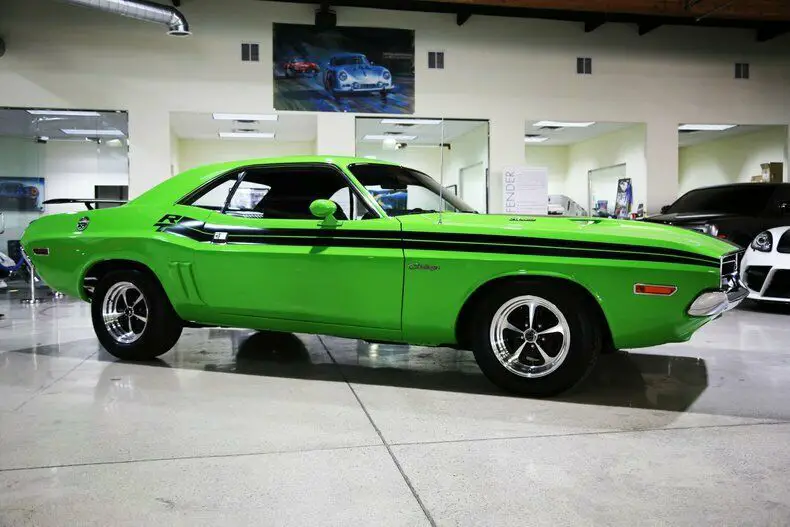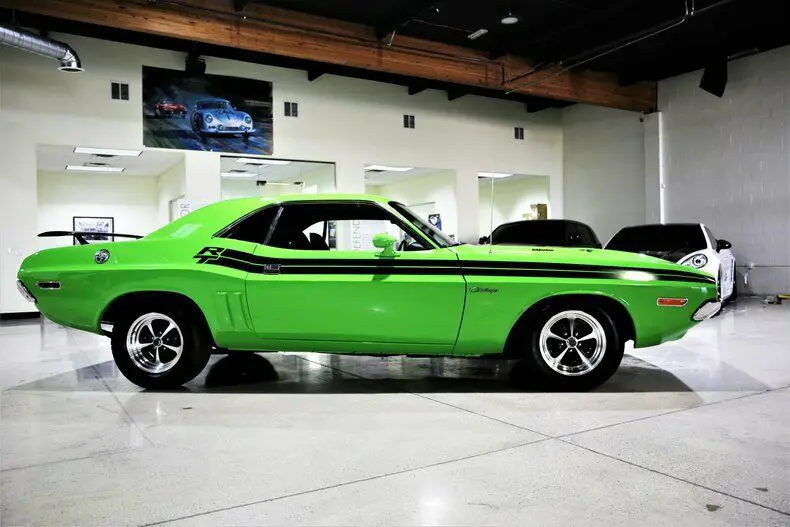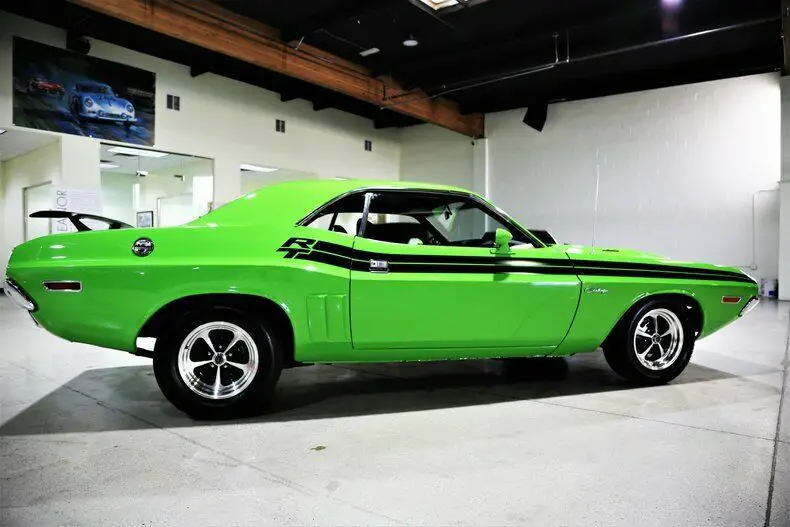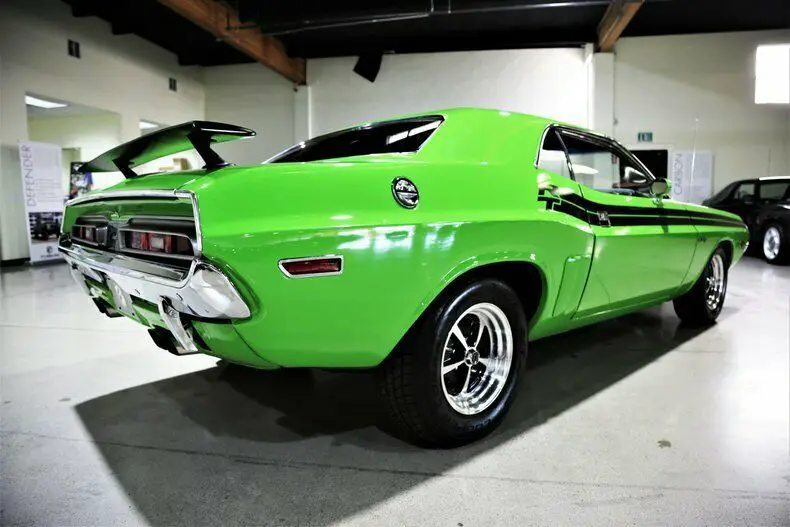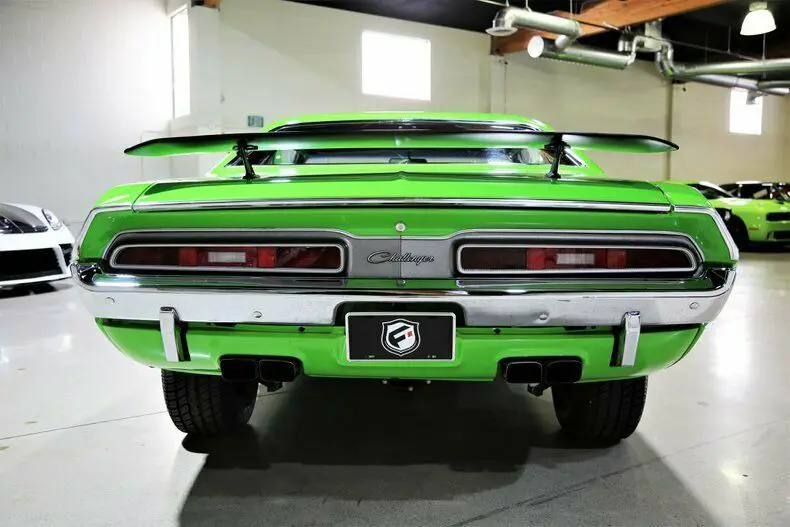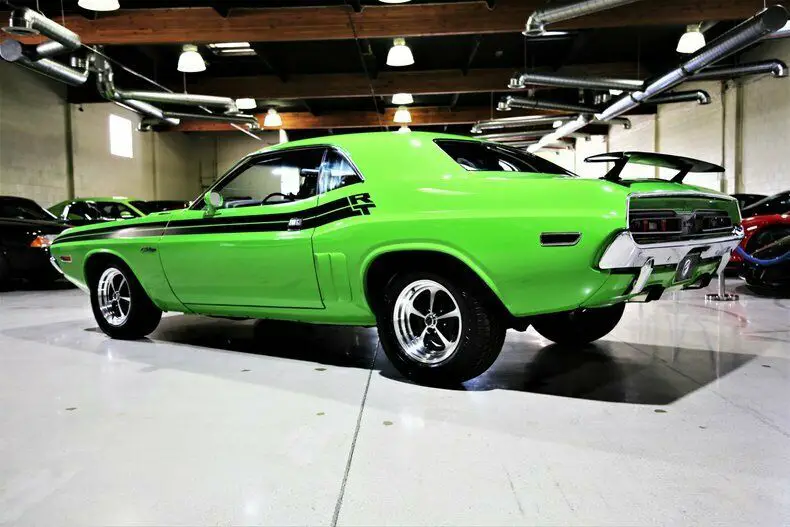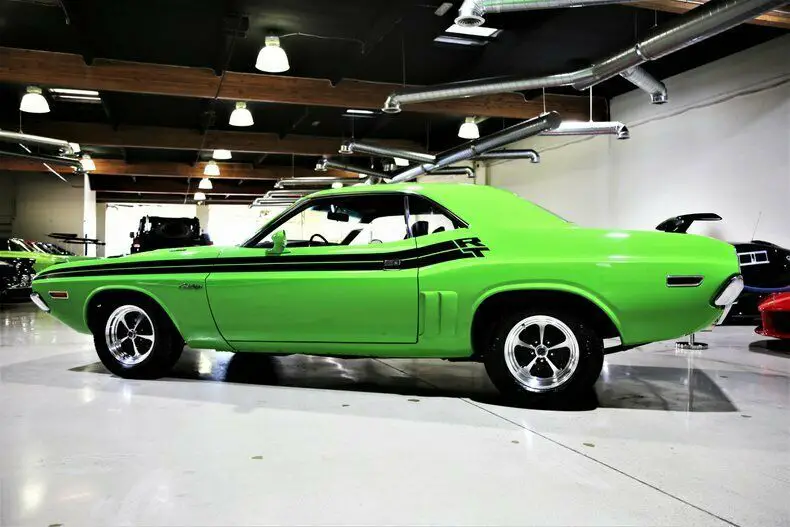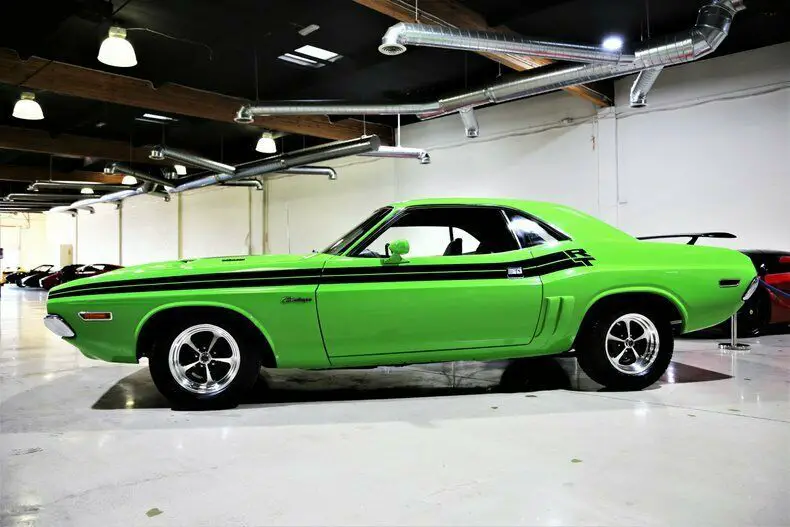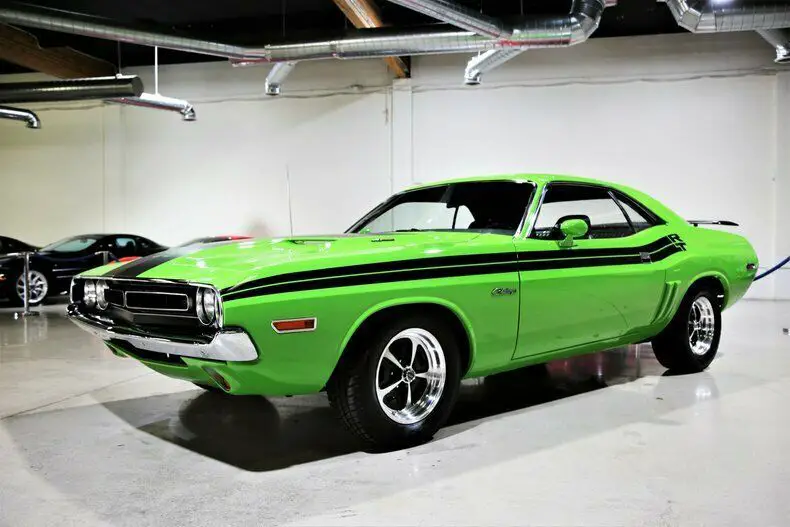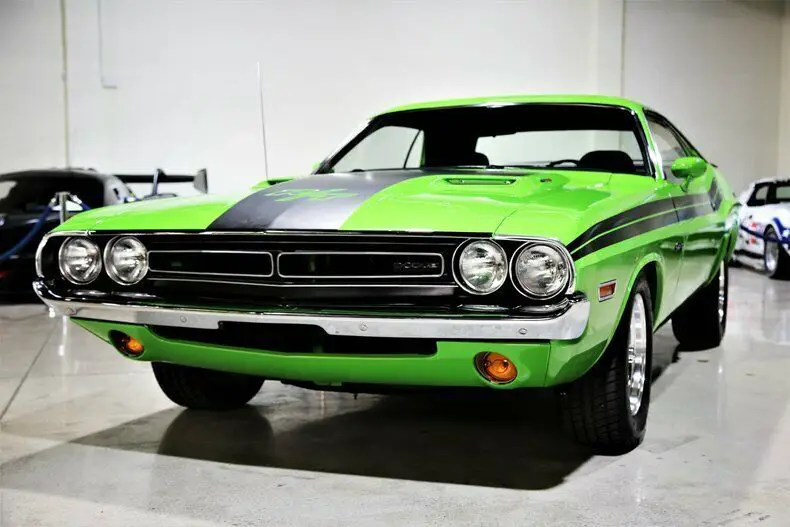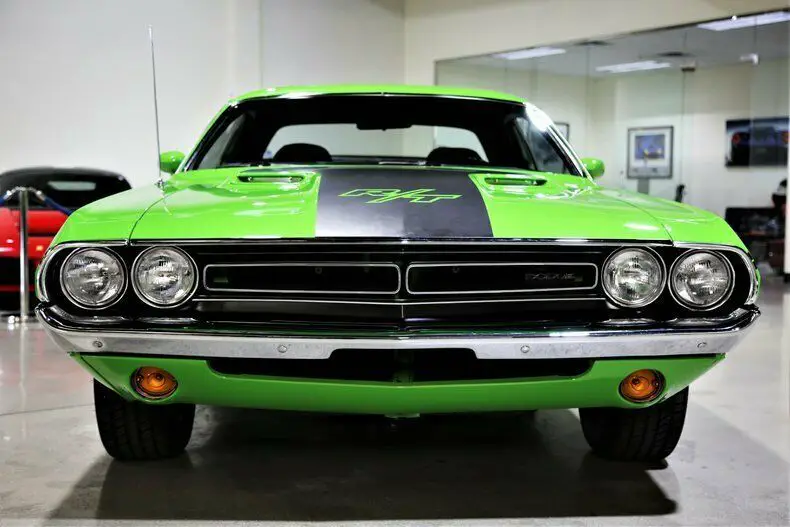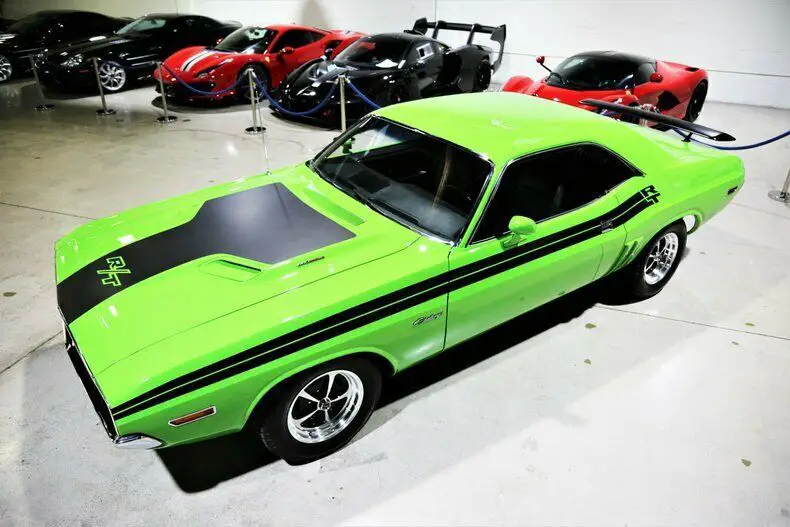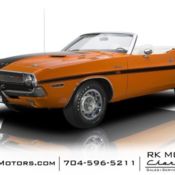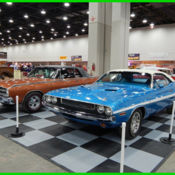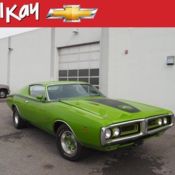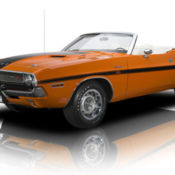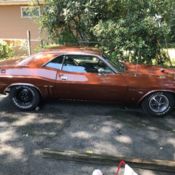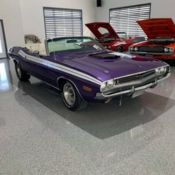1971 Dodge Challenger 16772 Miles Green Coupe 440 Magnum V8 4 Speed Manual
| Condition: | Used |
| Make: | Dodge |
| Model: | Challenger |
| Type: | Coupe |
| Year: | 1971 |
| Mileage: | 16772 |
| VIN: | JS23N1B331257 |
| Color: | Green |
| Engine: | 440 Magnum V8 |
| Fuel: | Gasoline |
| Transmission: | Manual |
| Drive type: | -- |
| Interior color: | Black |
| Vehicle Title: | -- |
| Extras |
|
-- -- |
| Listed by | Private seller |
Description of 1971 Dodge Challenger |
|
Presented is a real Factory Born Dodge Challenger R/T - This Muscular Mopar has undergone a rotisserie restoration and finished in it's Factory Correct High Impact Color of Sassy Grass Green (FJ6). Originally born with a 383, this R/T has been upgraded to a 440 with Dual Competition Carbs mated to a Pistol Grip 4-Speed Manual. The undercarriage has been painted as per the trim tag and looks excellent and the optional Go Wing has been added. Power Steering and Power Disc Brakes allow for an excellent driving experience as this Mopar roams the streets making its presence known. Great lease rates and Financing also available on any of our inventory! Buy Sell Trade Consignments Welcome! Please email or call 1-818-773-8181 About the Challenger: The Dodge Challenger was used on three different generations, two of those being pony cars. However, the first use of the Challenger name by Dodge was in 1959 for marketing a "value version" of the full-sized Coronet Silver Challenger. From model years 1970 to 1974, the first generation Dodge Challenger pony car was built using the Chrysler E platform in hardtop and convertible body styles sharing major components with the Plymouth Barracuda. Introduced in fall 1969 for the 1970 model year, the Challenger was one of two Chrysler E-body cars, the other being the slightly smaller Plymouth Barracuda. Positioned to compete against the Mercury Cougar and Pontiac Firebird in the upper end of the pony car market segment, it was "a rather late response" to the Ford Mustang, which debuted in April 1964. Even so, Chrysler intended the new Challenger as the most potent pony car ever, and like the less expensive Barracuda, it was available in a staggering number of trim and option levels, and with virtually every engine in Chrysler's inventory. The Challenger's longer wheelbase, larger dimensions, and more luxurious interior were prompted by the launch of the 1967 Mercury Cougar, likewise a bigger, more luxurious and more expensive pony car aimed at affluent young American buyers. The 110 in wheelbase was 2" longer than the Barracuda's, and the Dodge differed substantially in its sheet metal, much as the Cougar differed from the shorter-wheelbase Mustang. Air conditioning and a rear window defogger were optional. With 1971 being the sole exception, the front ends of both cars differed from each other in that the Challenger had four headlights and the Barracuda had only two; a trend replicated by offerings from Chrysler's rivals. The exterior design was penned by Carl Cameron, who was also responsible for the exterior designs of the 1966 Dodge Charger. Cameron based the 1970 Challenger grille on an older sketch of a stillborn 1966 Charger prototype that was to have a turbine engine. For its introductory model year the Challenger was available in two series, Challenger and Challenger R/T, and three models, two-door hardtop, Special Edition two-door hardtop, or convertible. The base model was the Challenger with either an inline-6 or V8 engine. The Special Edition hardtop, available on either the base Challenger or on the R/T, added a number of appearance, convenience, and comfort features. Produced for the 1970 model year only, this more luxurious SE specification included as standard a vinyl roof with a "SE" medallions on the pillars, a smaller "formal" rear window, leather and vinyl bucket seats, and an overhead interior console that contained three warning lights (door ajar, low fuel, and seatbelts). The standard engine on the base model was a 225 cu in (3.7 L) Straight-6. The standard engine on the higher trim models was a 318 cu in (5.2 L) V8 with a 2-barrel carburetor. For 1970, the optional engines included the 340 and 383 cu in, as well as the 440 and 426 cu in V8s, all with a standard 3-speed manual transmission, except for the 290HP 383 cu in. engine, which was available only with the TorqueFlite automatic transmission. A 4-speed manual was optional on all engines except the 225 cu in Inline-6 and the 2-barrel 383 cu in V8. The performance model was the Challenger R/T (Road/Track), with a 383 cu in (6.3 L) "Magnum" V8, rated at 335HP. The standard transmission was a 3-speed manual. Optional R/T engines were the 375HP 440 cu in Magnum, the 390HP 440 cu in Six-Pack and the 426 cu in Hemi rated at 425HP. The R/T was available in either the hardtop or convertible. The Challenger R/T came with a Rallye instrument cluster that included a 150 mph speedometer, an 8,000 rpm tachometer and an oil pressure gauge. For the 1971 model year the Challenger Coupe became the entry-level model, with either a straight-six or V8 engine. Like the Challenger Deputy it replaced, it had fixed rear quarter windows and a basic black steering wheel with horn button |
 Home
Home Contact us
Contact us NEWEST CARS
NEWEST CARS SELL YOUR CAR
SELL YOUR CAR FAQ
FAQ